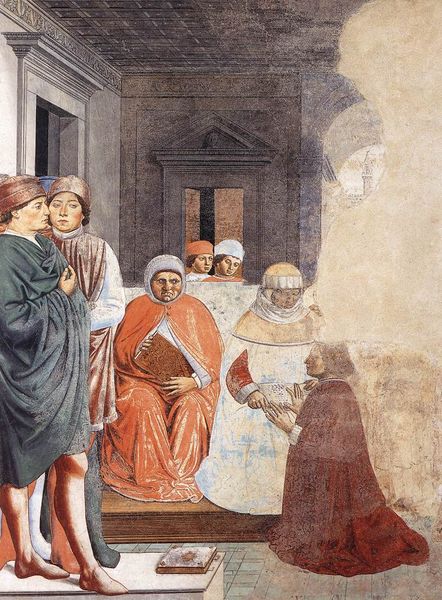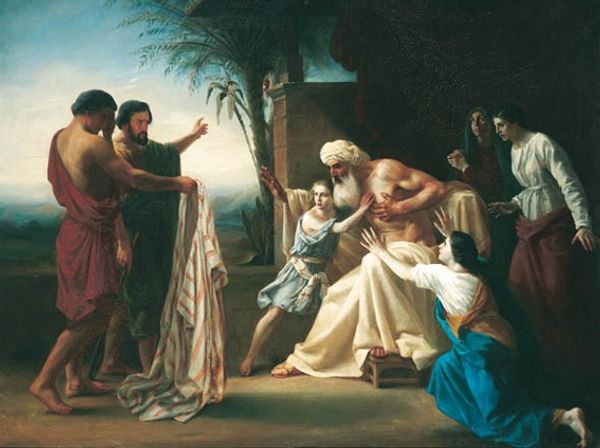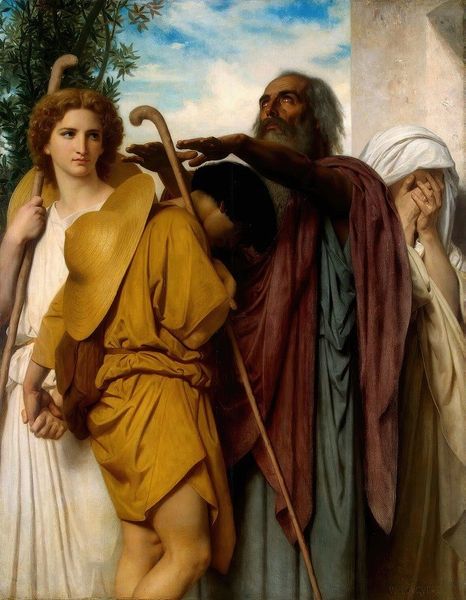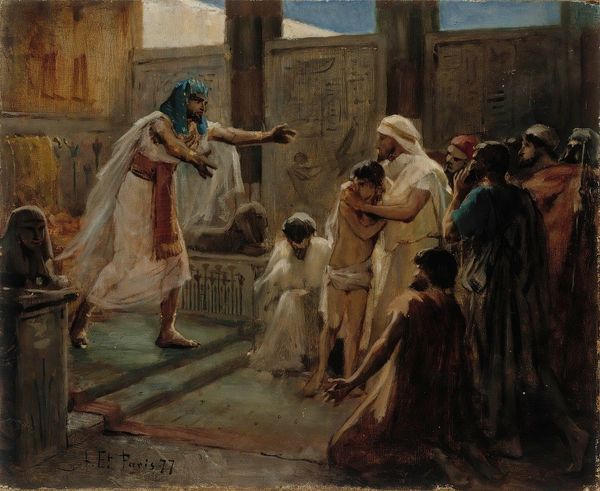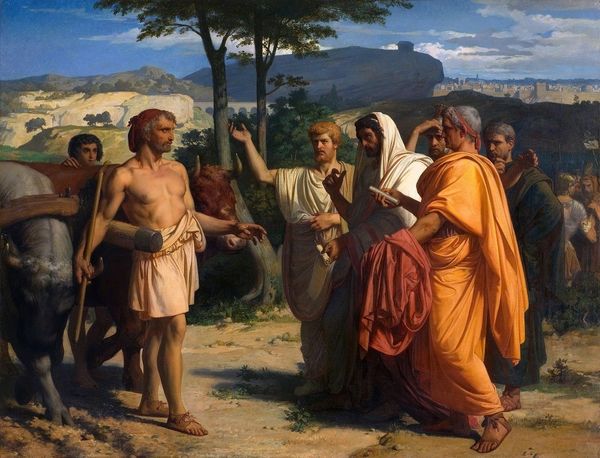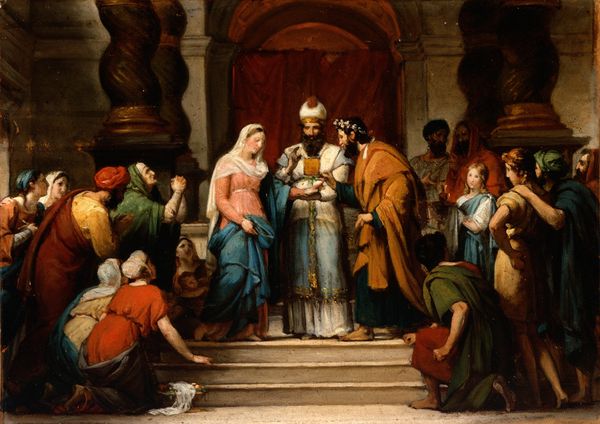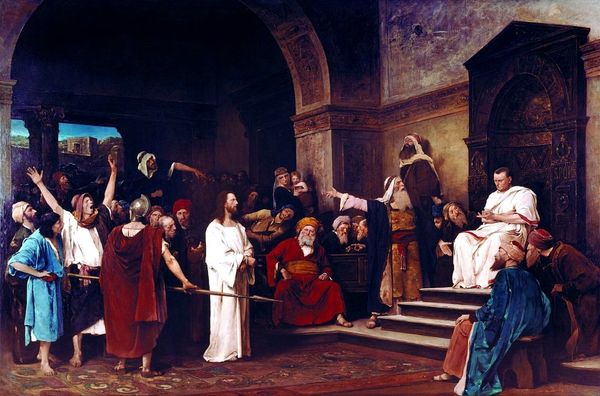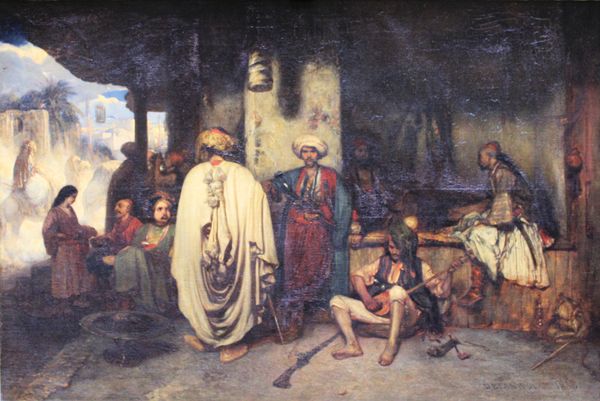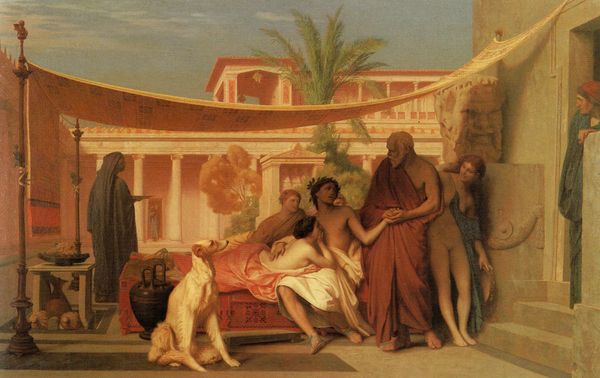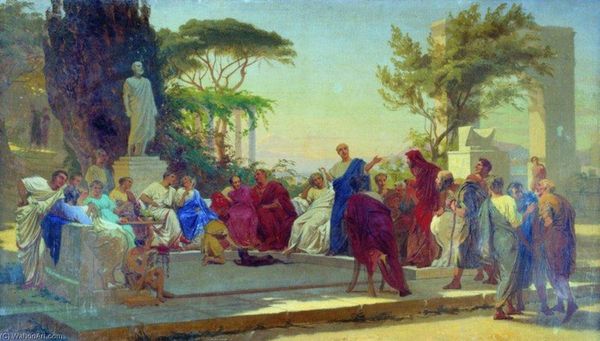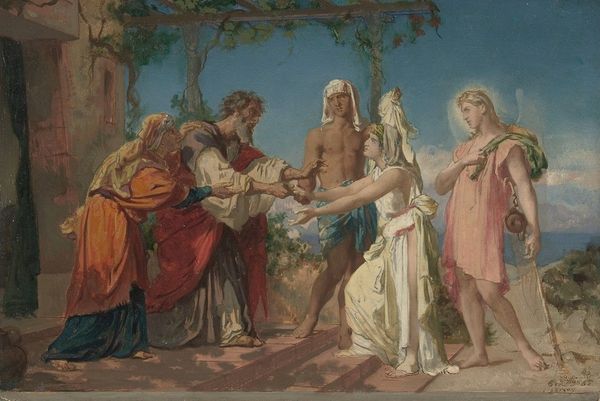
Copyright: Public Domain: Artvee
Curator: Frederic Leighton's "Captive Andromache," created between 1886 and 1888, presents us with a scene steeped in classical mythology rendered in oil on canvas. Editor: The first thing that strikes me is how Leighton uses this bright, almost relentless sunlight to bathe the scene, yet he achieves such profound melancholic depth. Curator: Leighton masterfully depicts Andromache's sorrow following the Trojan War, a symbol of loss and female suffering during times of conflict. Her posture reflects not only personal grief but also a broader representation of women marginalized and oppressed. The well serves as the social center of this image of women—as women are themselves essential and central to social function—but she stands separate, a captive of war but still with a sense of self that sets her apart. Editor: Indeed, look at how Leighton directs our eyes. The strong vertical lines—the architecture, the standing women—frame Andromache as a dark, central column. But notice also how those sharp angles soften with the curves of the urns and figures clustered around the well; there's such tension created by that interplay of lines. It suggests an integration which seems forever out of Andromache's reach. Curator: Consider the male figures. They are at play, they’re drinking; one of the men with the musical instrument is playing to the well’s population. It gives the sense that those who remain benefit directly and immediately from war—in contrast to women who suffer loss and rape and enslavement. In "Captive Andromache," Leighton speaks volumes about societal power dynamics and the historical injustices that perpetuate patriarchal domination and its effects on the disempowered. Editor: But consider also the details Leighton brings into play. The crispness of the folds of fabric. The women are all clothed, their feminine features still prominent—whereas some of the men in the painting are mostly or entirely unclothed. There are erotic implications that the presence of the men at this well cannot mask or conceal. The classical romanticism almost aches, which then draws even more attention to the heavy sadness of the main figure in black. Curator: Absolutely. Examining "Captive Andromache" offers a window into not just the past, but into our present social frameworks, allowing us to explore intersections of gender, class, and war's brutal legacy and how these concepts can also be rendered to disarm—and arouse. Editor: For me, Leighton uses classical form to examine deep emotional space, even in such a crowded scene.
Comments
No comments
Be the first to comment and join the conversation on the ultimate creative platform.
